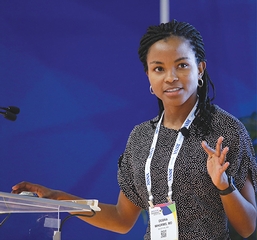While many patients diagnosed with breast cancer seek an additional review and reinterpretation of their breast imaging studies from a specialized cancer center, second-opinion radiology review can be time-consuming, labor-intensive – and expensive.

Whorms
However, if a second opinion finding progresses from benign to malignant, it is generally accepted that the increased cost for further evaluation and management is both beneficial and warranted. As a result, most studies on the clinical impact of second opinion radiology consultation for patients with breast cancer continue to support the use of second opinions in clinical management.
That said, there is the lack of a gold standard assessing whether the first or second opinion is correct. During a Monday session, Debra Whorms, MD, a resident physician at Cambridge Health Alliance, Mass., shared results of her research examining the impact of second opinion breast imaging consultation in patients with a new breast cancer diagnosis.
"We looked at the frequency of discrepancy between interpretation from outside radiologists and those from breast imaging specialists providing the second opinion and assessed the impact this had on guiding management changes and finding new malignancies," she said.
Study Highlights Discrepancy Between Radiologists
Dr. Whorms' research differs from prior studies in that her team assessed discrepancy using the American College for Radiology RADPEER™ scoring system. Discrepancy scores were assigned blindly by two breast imaging radiologists in consensus, with cases showing a moderate to major discrepancy being reviewed by medical and surgical oncologists for management changes.
"We think this approach offers a more accurate and comprehensive assessment of true discrepancy between radiology reads," she said.
Based on this research, Dr. Whorms found that not infrequently – 16 percent of the time – there is a significant discrepancy between radiologists. Furthermore, this discrepancy resulted in a change in the surgical management plan for 7 percent of patients and the identification of malignancy in 4 percent.
"These findings highlight the variation or discrepancy between radiologists and the impact this can have on patient care," Dr. Whorms said. "In general, our study supports a multi-disciplinary breast oncology program, with embedded formal breast imaging subspecialty second opinion consultation, for all patients referred with newly diagnosed breast cancer."
Nevertheless, Dr. Whorms noted several potential drawbacks, including a higher-than-usual rate of false positive reads as consulting radiologists have a heightened level of scrutiny given a cancer diagnoses. There is also a potential delay in treatment due to the need for additional diagnostic evaluation, which could increase costs.
Further research is needed to help determine the implications of the service on time-to-treatment, long-term patient outcomes and health care costs.
Twitter Poll
Have you ever given a second opinion on breast cancer imaging that changed the treatment approach? #RSNA18
— RSNA (@RSNA) November 26, 2018

